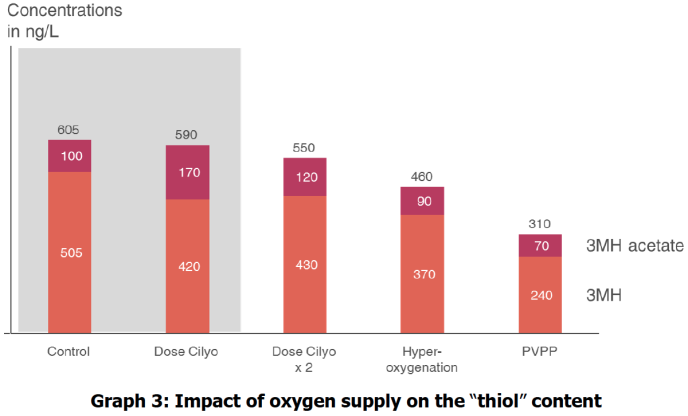Challenges of Early Oxidation
Early oxidation of white wines is a growing problem. There are classic ways of dealing with it: hyperoxygenation and hyperprotection, but they are not always precise. That's why Vivelys has developed an alternative solution: Controlled Must Oxygenation (O2CM).
The role of natural enzymes
The O2CM principle is based on the use of polyphenol oxidase (PPO), a natural enzyme present in the must. Unlike chemical oxidation mechanisms, enzymatic ones are highly selective. Adding oxygen to the must eliminates the phenolic acids involved in oxidation, producing condensation compounds which are then removed during racking.
Using the Cilyo® tool
To determine the ideal amount of oxygen to add, Vivelys has developed the Cilyo®. This approach reduces vulnerability to subsequent chemical oxidation and optimizes wine aromatic profiles.
Positive impact on wine profiles
O2CM treatments, carried out on some twenty grape varieties, show positive effects on wine profiles:
- Reduced vegetal perception
- Increased wine maturity, while preserving the intensity of the "thiol" character.
In particular, Sauvignon Blanc wines evolve towards more tropical notes. On the palate, a greater perception of "fatness" is perceived, improving the overall quality of the wine.

Financial benefits
The O2CM allows specific, independent treatment of each grape juice. This strategy, which separates juices according to their polyphenol content, ensures stability against oxidation and a distinct aromatic profile. The financial benefits are significant: increased quality without additional production costs, and enhanced product value on the market.
Conclusion
In short, O2CM is an innovative method for enhancing and preserving white and rosé wines.
To find out more about Cilyo® and its impact on the quality of your wines, contact us today.